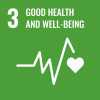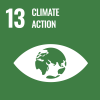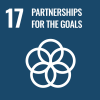
Introduction
International development cooperation can help countries to overcome crises in an interconnected world. The COVID-19 pandemic has posed new demands on development cooperation in its various forms: finance, capacity support, policy change and multi-stakeholder partnerships. The ongoing challenge of the pandemic and its consequences has also shown the durability and adaptability of development cooperation. The pandemic recovery offers a unique opportunity to fully reimagine and scale up international development cooperation that is informed by risk, designed to build resilience and strongly linked with climate action. Such a reimagined development cooperation could strengthen the foundation for collective action in the COVID-19 pandemic response and recovery. Global agreements already in place—the 2030 Agenda for Sustainable Development, Addis Ababa Action Agenda, Paris Agreement and the Sendai Framework for Disaster Risk Reduction 2015–2030—provide a foundation for building back better. However, doing so will require more concerted, creative and flexible implementation, and efforts at all levels must build on and reinforce country systems, policy frameworks and national and local capacities; support inclusive approaches; and facilitate coordination among the diverse actors needed for success.
Global context
Official development assistance (ODA) serves as a critical counter-cyclical resource for developing countries, especially least developed countries (LDCs), small island developing States (SIDS) and other countries in special situations. Preliminary data show that ODA totaled USD 161.2 billion in 2020. This is up 3.5 per cent in 2020 over the same period in 2019 in real terms (according to the OECD Development Assistance Committee (DAC) new grant-equivalent measures), based on an increase in COVID-19 related activities and bilateral loans. As a share of DAC member GNI, ODA was on average 0.32 per cent, remaining far below the United Nations target of 0.7 per cent of GNI. Recent years have seen significant growth in ODA loans versus grants. For example, partners increased their use of loans as a share of total ODA to developing countries from 12 per cent to 16 per cent between 2010 and 2019, while ODA provided in the form of grants fell from 86 per cent to 83 per cent during the same period. This trend poses particular challenges for the poorest and most vulnerable countries, especially given the current crisis context and rising debt sustainability issues. South-South and triangular cooperation showed signs of resilience in the pandemic context, particularly in the areas of technical cooperation, in-kind support and multi-stakeholder partnership, as well as mobilizing financial support. South-South cooperation is solidarity-based and a complement to—not a substitute for—North-South cooperation. Demand and interest have intensified for learning about how countries are integrating and institutionalizing South-South and triangular cooperation as part of their national development cooperation systems and policies. The crisis has also revealed strong demand for South-South collaboration and better capacity development in areas like digital technology and data skills; philanthropic innovation; and collaborative funding initiatives, among others. Private, philanthropic actors have been particularly active in the COVID-19 response and recovery, including in the development and equitable distribution of COVID-19 tests, treatments and vaccines. Additionally, the pandemic put a spotlight on the increasing contribution of philanthropy, private sector and non-governmental organizations in driving international collaboration for global health research and development, such as through research cooperation and the sharing of data, knowledge, technologies and other tools. Recommendations:
◆ Development partners should meet the ODA target of 0.7 per cent of GNI for ODA to developing countries and 0.15 to 0.20 per cent of ODA/GNI to LDCs, aligned with developing country priorities and strategies. The provision of grants rather than loans should be emphasized, particularly for LDCs and SIDS. Supporting middle-income countries (MICs) is also an imperative for recovery, including through non-concessional lending windows of multilateral development banks that can provide long-term finance at below-market rates.
◆ South-South and triangular cooperation have shown resilience in the pandemic context and should be further strengthened in support of enhanced capacities and resources for risk-informed development cooperation.
To strengthen partnerships for resilience, the engagement of private sector actors—including philanthropies—in development cooperation should focus on priority areas in which their expertise and resources can have a transformational impact (e.g., climate action, financial inclusion, digital inclusion, SME financing, the creation of decent work opportunities for women and youth).
Navigating the risk landscape through development cooperation
Strengthening health systems
Building strong health systems and strengthening national health capacities are urgent priorities, not only to address current COVID- 19-related challenges but also to help reduce vulnerability to future health risks and enhance preparedness. The pandemic reveals the high human, financial and developmental costs of the familiar “panic-neglect cycle” in public health, in which disease outbreaks spur mobilization of emergency funds, yet the more catalytic and cost-effective long-term investment in health systems remains relatively scarce. Funding health and social protection systems ensures important first lines of defense in limiting the impact of the pandemic and other shocks that could exacerbate poverty and inequalities. However, many of the poorest and most vulnerable countries do not have the domestic resources necessary for sustaining these investments and will require development cooperation, including financing, capacity development and innovative partnerships, to achieve universal health coverage and social protection. The estimated annual shortfall of USD 200 billion to achieve the SDG targets for primary health globally needs to be urgently addressed. In recent years, ODA had shifted away from funding health systems towards battling infectious diseases, often channeled to vertical or global funds focused on a specific health challenge. Such funds are most effective when they can help build capacity in countries that can be sustained over the long-term, and complimented by functioning health systems. With better health systems in place in developing countries, the efficacy of vertical funds can be enhanced. Support for greater convergence of vertical health programmes into a health systems approach is growing— driven in part by lessons learned and experienced from the 2014-16 Ebola outbreak and COVID-19 pandemic. In the global response to COVID-19, rapid universal access to quality-assured vaccines, treatments and diagnostics must be ensured in all countries, with need prioritized over the ability to pay, in line with the 2030 Agenda pledge to leave no one behind. The Access to COVID-19 Tools (ACT) Accelerator has forged an unprecedented partnership of global health actors to drive global, equitable access to and development of healthcare tools that will accelerate the end of the pandemic. In addition to its three pillars— vaccines, therapeutics and diagnostics—it includes a fourth, cross-cutting “health systems connector”. The health systems connector aims to ensure that developing countries can overcome the obstacles to delivery of COVID-19 tools in their countries, by building stronger capacities and infrastructure, resolving bottlenecks, and strengthening health systems. Despite contributions amounting to USD 18.3 billion, the ACT Accelerator still requires an additional USD 15.9 billion in 2021 as of 29 October. COVAX, the vaccines pillar of the ACT Accelerator, has initiated vaccine rollouts for the world’s poorest countries, but distribution remains a major obstacle. Only 20 per cent of people in low- and lower-middle-income countries have received a first dose of vaccine compared to 80% in high- and upper-middle income countries. The COVID-19 health response has also underlined the importance of national governments and multilateral institutions having well-established frameworks and systems for partnering with civil society at all levels. Development cooperation with civil society in local communities has aided measures across the response spectrum. Recommendations:
◆ Countries must move beyond vaccine nationalism to ensure that all countries support equitable and timely access to COVID-19 vaccines, treatments and related tools as global public goods. Strengthened solidarity and coordination is essential to advance the production, supply and distribution of vaccines, particularly in the most vulnerable countries.
◆ Investments in health and social protection systems and related infrastructure will ensure an inclusive pandemic recovery and the strengthening of long-term equity and resilience, including of women and girls.
Addressing the dual challenge of pandemic recovery and the climate emergency
Insufficient resourcing for climate adaptation and mitigation could result in irreversible consequences that will undermine the pandemic recovery and the long-term sustainability of ecosystems, societies and economies. The alignment of stimulus funds with climate action across countries has been limited to date, with recent Oxford University analysis estimating that only 18 per cent of recovery spending has been “green” or environmentally positive spending. Recovery spending should also include positive social spending in line with the SDGs. The preliminary OECD data for 2020 show that specific climate-focused contributions were one factor driving the increased ODA levels from a small number of countries. However, analysis of International Aid Transparency Initiative data highlights that the overall proportion of climate-focused projects within ODA had fallen, with projects focusing significantly on climate mitigation and/or adaptation decreasing between 2019 and 2020. Fiscal pressures on many developed countries have made meeting climate finance commitments challenging, and some recovery-related activities—like fossil fuel subsidies—are potentially exacerbating existing climate vulnerabilities. ODA for disaster risk reduction (DRR) also remains limited, with only 0.1 per cent of total ODA having been allocated to DRR over the past decade. Without greater development cooperation for DRR—in line with Target F of the Sendai Framework to enhance international cooperation in support of national DRR efforts—developing countries remain limited in their capacities to both prevent and manage disasters brought on through natural hazards. Aggregate figures on climate finance from public and private sources remain difficult to track, given the variety of applied data collection methodologies and limited transparency in private climate finance flows. Greater degrees of intermediation and complex financing arrangements pose difficulties in monitoring financial transactions and gauging impacts of blended finance in climate action.²³ Although OECD estimates from 2018 showed an upward trajectory in total climate finance, COVID-19 may have had an adverse effect as priorities by most actors shifted to urgent pandemic response measures. There are also concerns around whether climate finance being mobilized is “new and additional”, rather than counted towards ODA commitments. Ensuring that developing countries have the resources needed to navigate both pandemic recovery and the climate emergency is paramount. The most vulnerable countries and peoples need easier and more timely access to concessional resources to respond to the growing challenges of climate adaptation and mitigation at the country level. Several important trends emerge with implications for pandemic recovery. First, increased use of loans and other non-grant instruments, instead of grant financing, poses challenges, especially for developing countries confronted with unsustainable debt. Second, the continued tilt of climate finance toward mitigation rather than adaptation is an ongoing problem for the most vulnerable countries. Third, private climate finance remains highly concentrated, both sectorally and geographically. Blended finance has been successful in the infrastructure and energy sectors in some country contexts, but the evidence on blended finance for adaptation activities is mixed. Progress is most likely where financial solutions have been aligned with developing country priorities. Development partners have a wide range of tools available to integrate climate action into development cooperation policies and practices throughout pandemic recovery, including strengthened capacities for developing countries to design and implement fiscal policies that deliver co-benefits on growth, job creation, health and the environment. Development cooperation actors should use the commitments made at COP26 as a stepping stone toward further action and commitment to achieving a climate-smart recovery as economies reopen. Recommendations:
◆ Climate change and the pandemic need to be tackled together, addressing widening inequalities. This dual challenge requires countries to meet their ODA and climate finance commitments, build capacities and support the achievement of nationally determined contributions (NDCs). Achieving the $100 billion target will demonstrate development partners’ commitment to achieving the Paris Agreement. It is the bare minimum needed to support climate mitigation and adaptation for the developing world and should be in addition to existing ODA commitments.
◆ Bilateral and multilateral development cooperation actors should align their activities with the Paris Agreement more rapidly, moving away from investments in fossil fuels. Among the multilateral development banks, full implementation of the joint framework for aligning activities with the Paris Agreement and related assessments covering all activities are critical.
◆ Once-in-a-generation opportunities must be taken to advance policies that tackle multiple risks simultaneously, and enhance the quality and impact of investments, including in resilient infrastructure, to ensure that climate action and pandemic recovery efforts are reaching local communities, indigenous peoples and youth.
Strengthening data and statistical capacities and systems, including through technology
National data and information systems and capacity remain weak and under-resourced in many developing countries. Limited capacity to capture and track vital statistics for the most vulnerable people creates blind spots for policy makers and practitioners. Investments in statistical infrastructure, such as civil registration and vital statistics, would yield returns in strengthening capacities both to respond to health crises and to manage health and demographic change more generally. Well-resourced data systems are also crucial to provide the statistics and indicators required to assess risk exposure and identify priorities for building resilience. The pandemic has put further burdens on developing countries’ already over-stretched data and statistical systems. New demands and data challenges have emerged, such as for web-based self-reporting techniques for data collection operations; lockdown-driven mobility restrictions affecting data collection; the switch to e-learning for technical assistance and training; and connecting users to relevant data and information and encouraging for relevant use and impact. Technology - such as mobile and digital communications and geospatial tools - play a key role in improving data collection methods for the most vulnerable countries and populations. However, the manner in which Governments and companies use technologies for data collection and analysis is a defining challenge. A key question is how to balance privacy and personal protections with the effective use of data as an asset for sustainable development. Recommendations:
◆ Development cooperation partners should help to strengthen the capacity of countries’ data and information systems. Partners should also support better real-time tracking of development cooperation-related data based on the provision of timely and accurate information.
◆ Building national and local capacities for data systems should include focusing on the regulatory environments around data governance. Such efforts should be grounded in multilateral consensus and collaboration relating to good digital governance standards, what such standards mean and how they are ensured in practice, not only at the national level, but also globally.
Building resilience through country ownership and stronger national development cooperation systems
The global health crisis and cascading social and economic crises have underlined the importance of having strong national development cooperation policies and practices in place to respond effectively to materializing risks and increase the impact of development cooperation resources. Developing countries have been making progress in strengthening their development cooperation systems and have reported being able to effectively deploy development cooperation in their national responses to the pandemic. Key enablers in these systems include national development cooperation policies; country-driven results frameworks; development cooperation information systems; national development cooperation forums; and capacity support as a cross-cutting enabler. Before the current crisis, having national sustainable development strategies in place helped countries to identify risks, think through contingencies and plan for different scenarios. The experience of developing countries with recent, more localized risks, such as the Ebola virus outbreak and natural disasters, had made such efforts an increasingly essential component of national development planning. Many developing countries have reflected that experience in their development cooperation systems. In the COVID-19 context, participating developing countries reported that having national development cooperation policies and related systems in place enabled them to work closely with partners to redirect resources from new or existing projects to urgent areas of need that they had identified. Many of these countries also found that having multiple enablers in place supported stronger results. To strengthen resilience, developing countries can adapt these enablers to their specific contexts and risk landscapes and strengthen alignment of international development cooperation with their priorities. These development cooperation systems also contribute to the design and implementation of integrated national financing frameworks (INFFs) to help countries mobilize and effectively manage diverse resources (public, private, domestic, international) to support implementation of their national sustainable development strategies. Despite progress, developing country participants have expressed uncertainty about whether bilateral partners would be able to meet their development cooperation commitments in the coming years, given the global context and uncertain recovery in advanced economies. They pinpointed several key priority areas for effective development cooperation moving forward in the pandemic response and recovery: strengthened capacities for mobilizing, managing and tracking financial and non-financial resources; reliable data and information on development cooperation to improve rapid decision-making; and capacity support towards collaboration with a diverse range of domestic stakeholders, beneficiaries and international partners. Recommendation:
◆ International development cooperation partners and developing countries should strengthen efforts to enhance their development cooperation systems, including by making them more risk-informed, resilient and climate-smart. Platforms such as the ECOSOC Development Cooperation Forum (DCF) and its biennial Survey exercise offer an opportunity to link global policy dialogue and innovative action in development cooperation on the ground in support of such efforts.
 Welcome to the United Nations
Welcome to the United Nations


